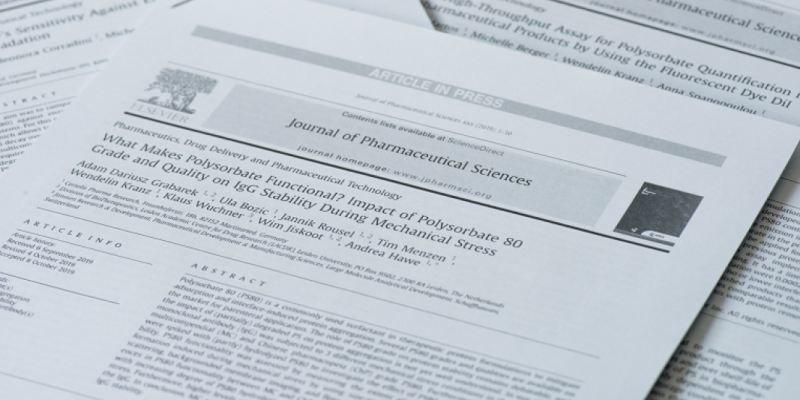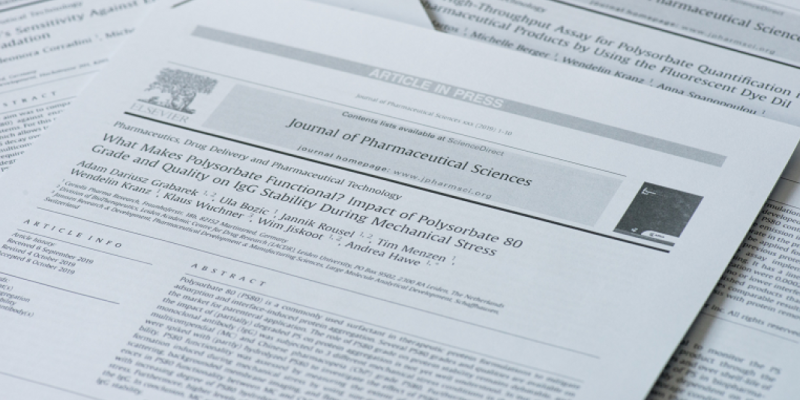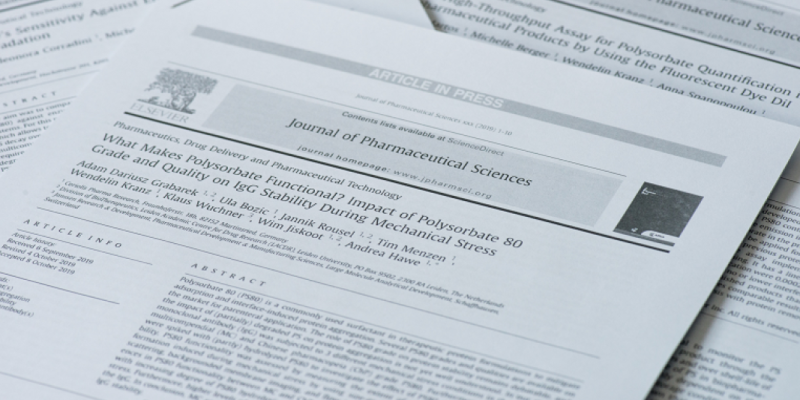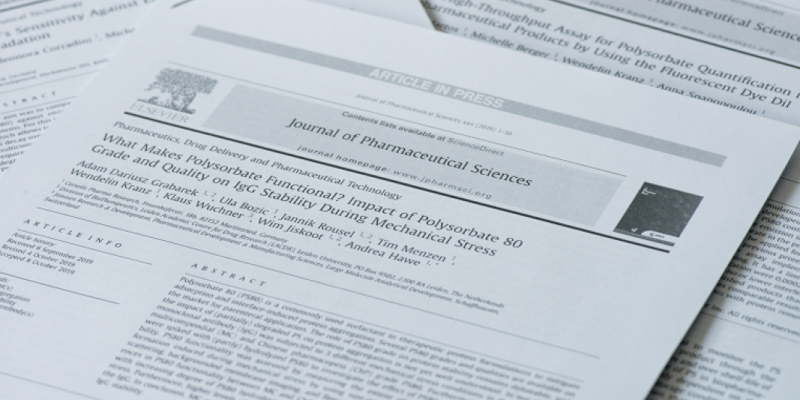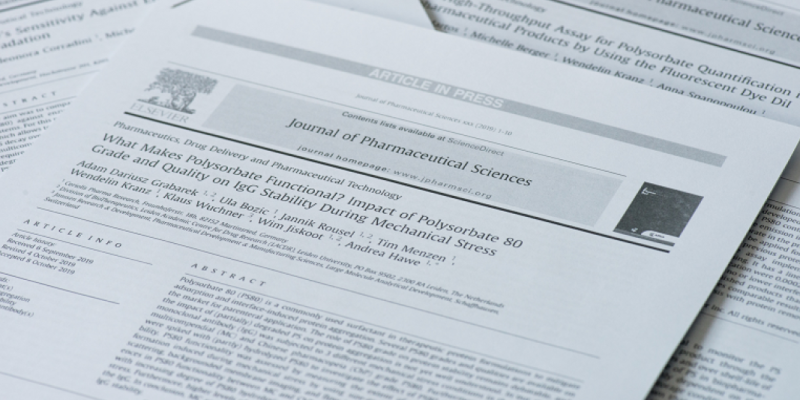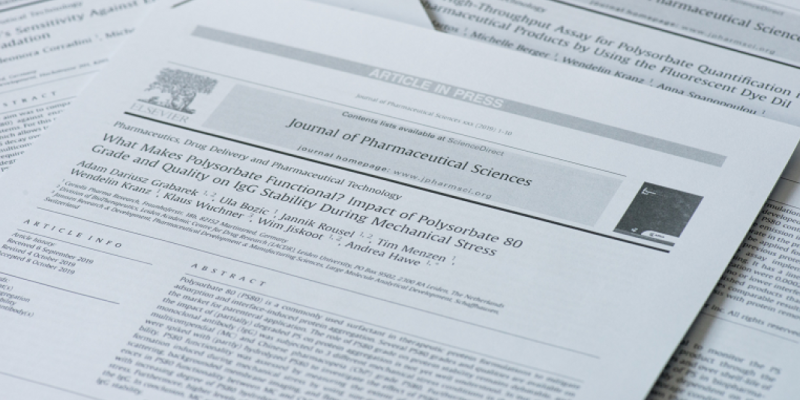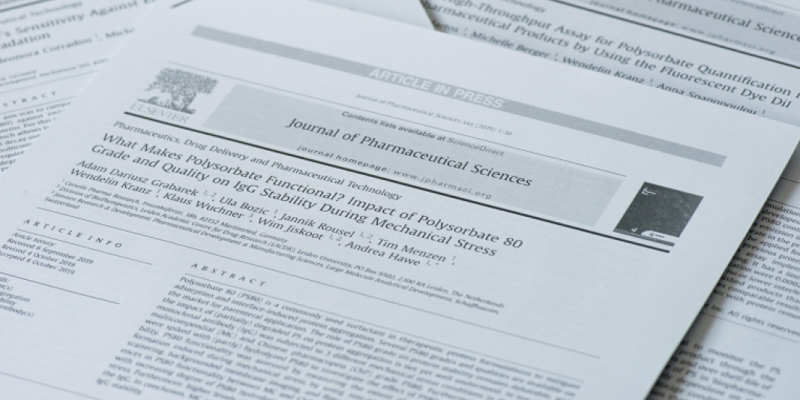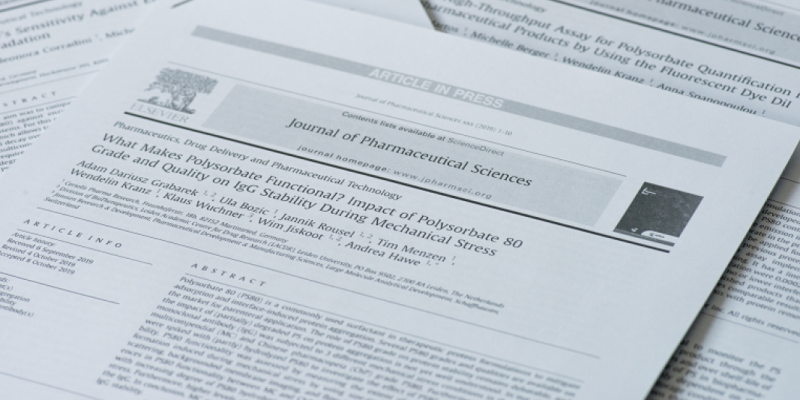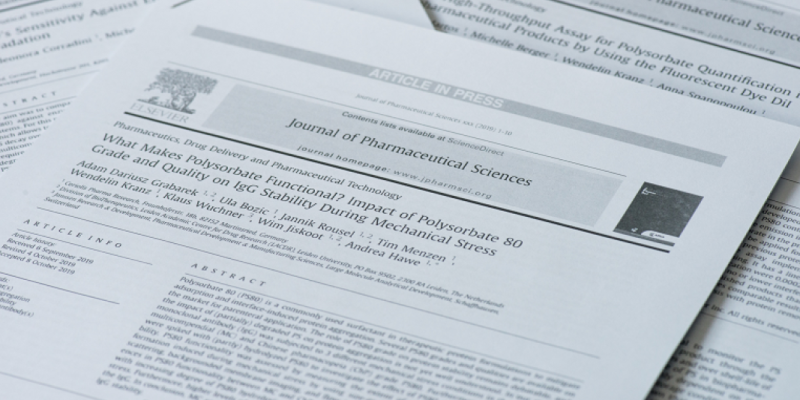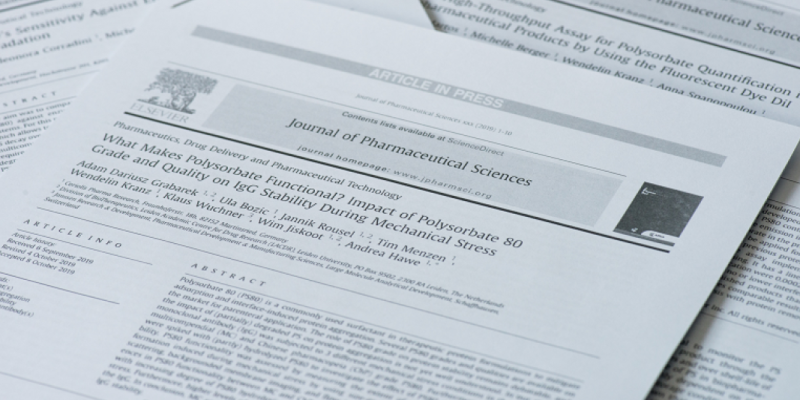Critical Evaluation of MRPS for Quantification and Sizing of Nanometer- and Micrometer-Sized Particles
J Pharm Sci. 2019 Jan
Critical Evaluation of Microfluidic Resistive Pulse Sensing for Quantification and Sizing of Nanometer- and Micrometer-Sized Particles in Biopharmaceutical Products
The objective was to evaluate performance, strengths, and limitations of the microfluidic resistive pulse sensing (MRPS) technique for the characterization of particles in the size range from about 50 to 2000 nm. MRPS, resonant mass measurement (RMM), nanoparticle tracking analysis (NTA) and dynamic light scattering were compared for the analysis of nanometer-sized polystyrene (PS) beads, liposomes, bacteria, and protein aggregates. An electrical conductivity of at least 3 mS/cm (equivalent to 25 mM NaCl) was determined as a key requirement for reliable analysis with MRPS. Particle size distributions of PS beads determined by MRPS, NTA, and RMM correlated well. However, counting precision varied significantly among the techniques and was best for RMM followed by MRPS and NTA. As determined by measuring single and mixed PS bead populations, MRPS showed the highest peak resolution for sizing. RMM and MRPS were superior over dynamic light scattering and NTA for the characterization of stressed protein samples. Finally, MRPS proved to be the only analytical technique able to characterize both bacteria and liposomes. In conclusion, MRPS is an orthogonal technique alongside other established techniques for a comprehensive analysis of a samples particle size distribution and particle concentration.
J Pharm Sci. 2019 Jan
https://jpharmsci.org/article/S0022-3549(18)30521-5/fulltext

